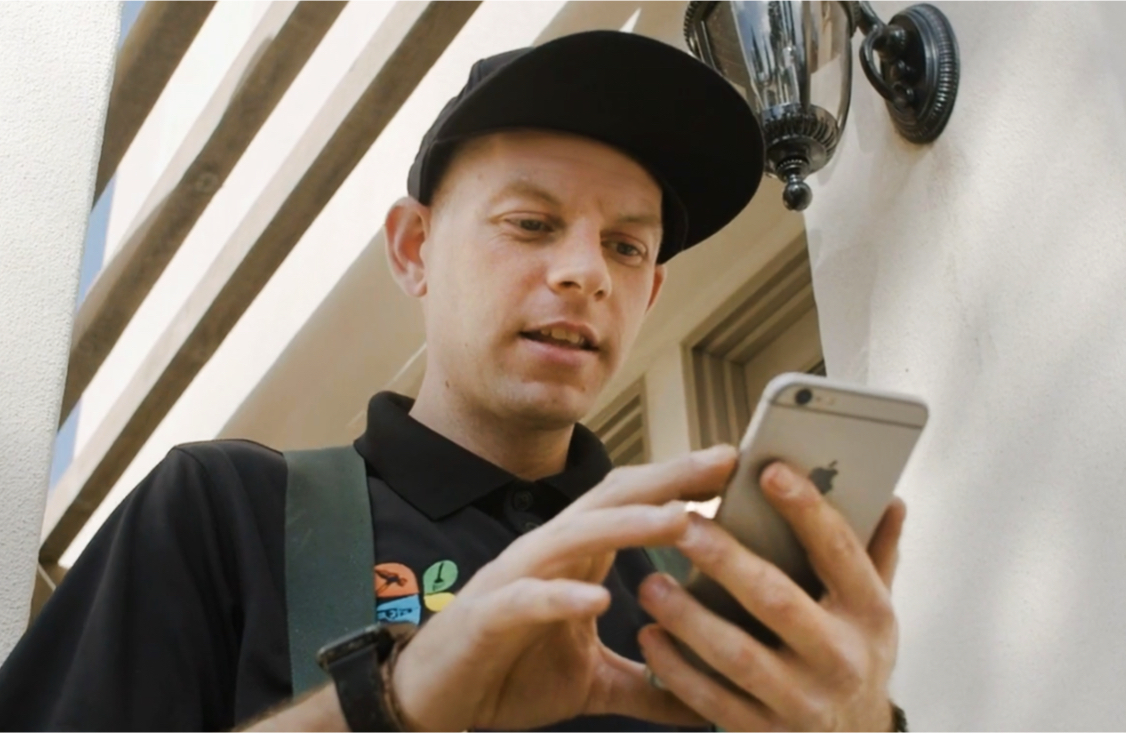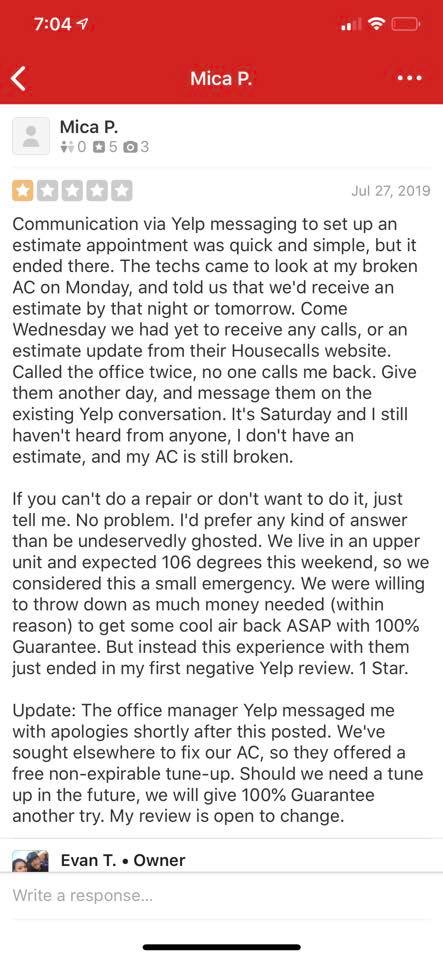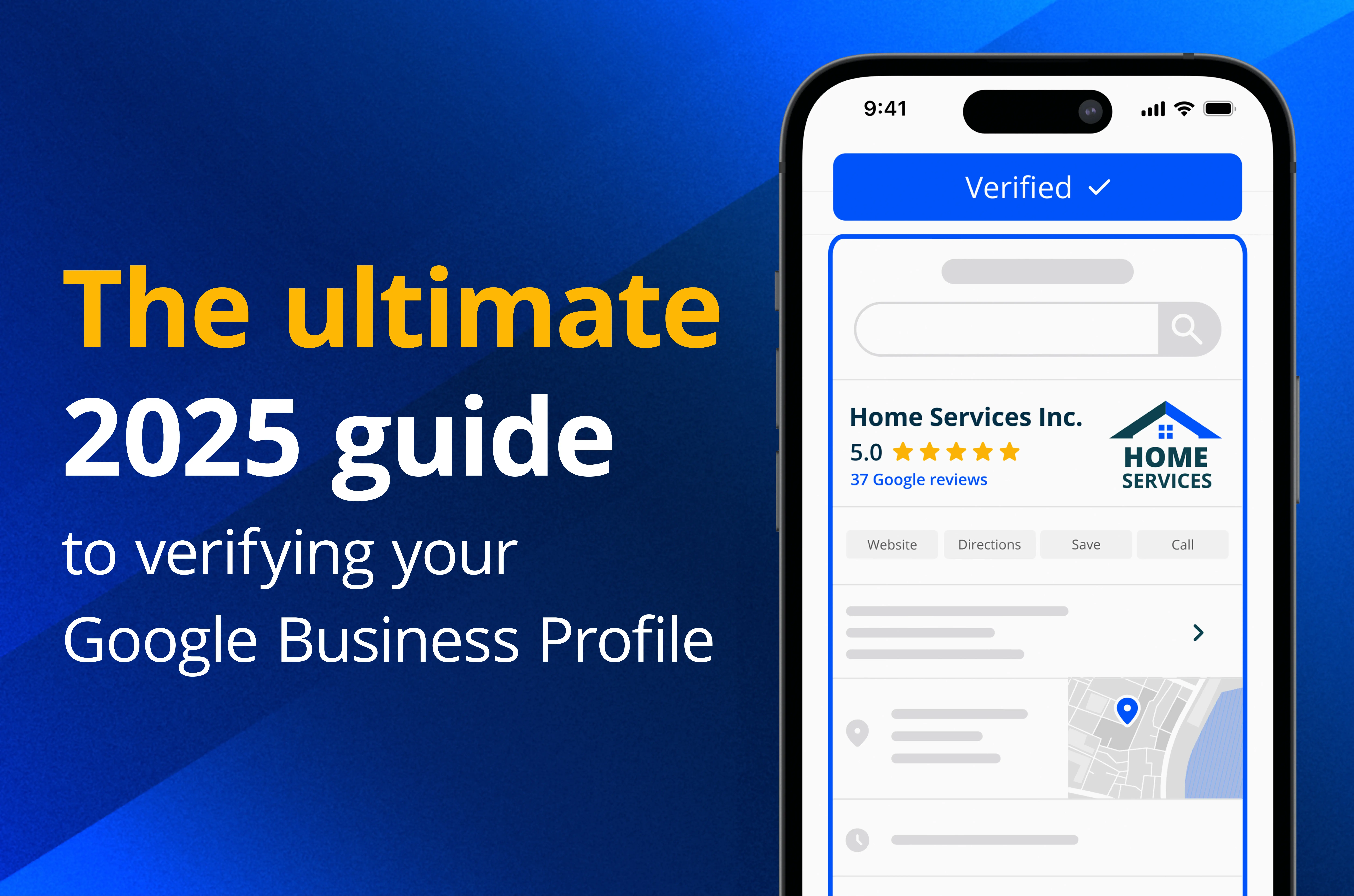
Unhappy customers are a major roadblock for home service professionals. You worry that customer complaints could harm your business’s reputation and hurt your bottom line.
Complaints are unavoidable. Instead, you should view them as opportunities to improve your business and show your commitment to your customers. By responding to customer complaints and taking action, you can transform an unhappy customer into a loyal advocate.
Why Customer Complaints Are Nothing to Worry About
Responding to customer complaints gives your business the power to change the narrative. You can improve the customer’s experience.
A Harvard Business Review study had researchers contact 400,000 customers who tweeted airlines and wireless carriers. The tweets included questions, comments, and complaints. The researchers asked the customers to take a survey to see how their customer service experiences affected their perceptions of the brands. Among the customers who complained, but who received responses from the companies, many said they were willing to spend $8 more for a future airline ticket as compared to the non-responsive companies and up to $9 more for the wireless carrier’s service.
This study illustrates the importance of connecting with your customers during negative experiences. Customer complaints aren’t permanent. Your team can improve how customers view your business with a simple response.
Research shows that there are 26 unhappy customers for every customer who complains. When you receive a complaint, it’s real-time feedback to help your business grow. It’s also an effective marketing strategy to attract new customers. If you do not have a customer service team, you should consider creating one for your business.
What to Consider Before Replying to Complaints
Simply responding to complaints isn’t good enough to be successful in the home service industry. You must create a plan to help you respond to complaints in a systematic way.
The first step is to consider the timeliness of your response. It’s crucial that you reply to a complaint in a prompt manner. If you receive a lot of complaints via social media, you may want to invest in social media listening tools, like Mention, to help you monitor customers’ messages.
Next, follow the H.E.A.R.D. structure when replying to a customer. This acronym stands for the following steps:
- Hear
- Empathize
- Apologize
- Resolve
- Diagnose
You need to identify the customer’s issue. Determine why the customer is angry; maybe it’s because of the quality of service or the interaction with your employees. Sometimes, poor customer experiences will dictate how you follow up with an unhappy customer. A brief apology may be enough; in other cases, you may need to redo the service or offer a coupon.
After you determine the type of customer problem, you can then take steps to address it. Engaging the customer in a conversation also can help you to identify how to please the customer.
Customer Complaint Professional Reponses: Real Examples
Check out these real-life examples members of the Housecall Pro community submitted.
Example #1: Responding to a complaint about communication
Example #2: Responding to a complaint about your estimate
Example #3: Responding to a poor review with no context
Using Templates for Your Responses to a Customer’s Complaints
No matter how your business receives customer complaints—by phone or via social media—templates can help your team. Templates can increase the quality and timeliness of your responses.
Templates also take the emotion out of your responses. You don’t want a customer service representative to react angrily when confronted by an unhappy customer. With a template, your team members can listen to the customer’s issue and fix it quickly.
A good template should be customizable and include the specific facts and circumstances of an individual customer’s complaint. You may want to incorporate the H.E.A.R.D. steps to ensure the response follows a proven structure.
Complaint response template #1: acknowledge the problem and apologize
Thank you for your feedback. Our policy is to return calls within 30 minutes after hours. We have listened to the call and will address the delay with our on-call team and answering service. We do offer 24-hour emergency services and are sorry for our failure to deliver a timely response. We value the feedback that allows us to improve services. Thank you.
Complaint response template #2: whether or not customers update their original review, respond in gratitude
Thank you so much for allowing us the opportunity to clear up the communication and confusion, and for allowing our team to make things right. I sincerely appreciate it. Please do not hesitate to reach out if there is anything else you feel needs to be addressed.
Customer Complaint Template #3: the perfect response to a negative review
Hi [FIRST NAME],
Thank you for bringing this issue to our attention, we apologize you experienced [PROBLEM] and understand how frustrating that must be. We truly appreciate your honest feedback and would love to help resolve your situation and then attempt to fix the root cause, to prevent any future issues.
We are dedicated to providing amazing customer service and would love to find a resolution for your situation. Please reach out to our team at
SUPPORT@YOURSITE.COM
or 1(800) 555-5555. Regardless, we would like to offer you [OFFER] as a small gesture while we work towards a resolution.
Sincerely,
[OWNER NAME]
Customer Complaint Template # 4: updated review reply
**RESOLVED**
We contacted this client and worked with them to remedy the situation. We have also taken steps internally to make sure this problem does not happen again. We also offered to send a small gift as a token of apology for their time and frustration and also as a thank you.
We truly appreciate [CLIENT NAME] bringing this to our attention and working with us to find a solution.
Sincerely,
[OWNER NAME]
Ways to Avoid Getting Complaints From Customers
In the home services industry, it is nearly impossible to avoid getting customer complaints. However, you can take steps to reduce the number of unhappy customers. The key is to focus on how you operate your business.
Begin by creating a company culture that offers great customer service and fosters strong customer relationships. Your customer service team should respond quickly to questions and exude a positive attitude. Make it part of your strategy to follow up with all your customers after the completion of a service. This action demonstrates to customers that you value their business and care about the quality of the work.
People want to be seen and validated. Train your team to remember customers’ names. It helps foster a good customer relationship and signifies excellent customer service. In return, your customers will feel more inclined to buy from you again and recommend your business to their friends and family members.
To develop a customer-centric culture, host webinars and other types of training for your employees. Create a reward system to recognize employees who demonstrate superb customer service qualities. Finally, realize you will never completely eliminate complaints, but you can turn them into opportunities for your company.
Customer complaints are part of all home service businesses. You transform complaints into business opportunities by addressing the customers’ issues and responding in a timely manner. This simple technique can turn unhappy customers into a valuable customer base.












